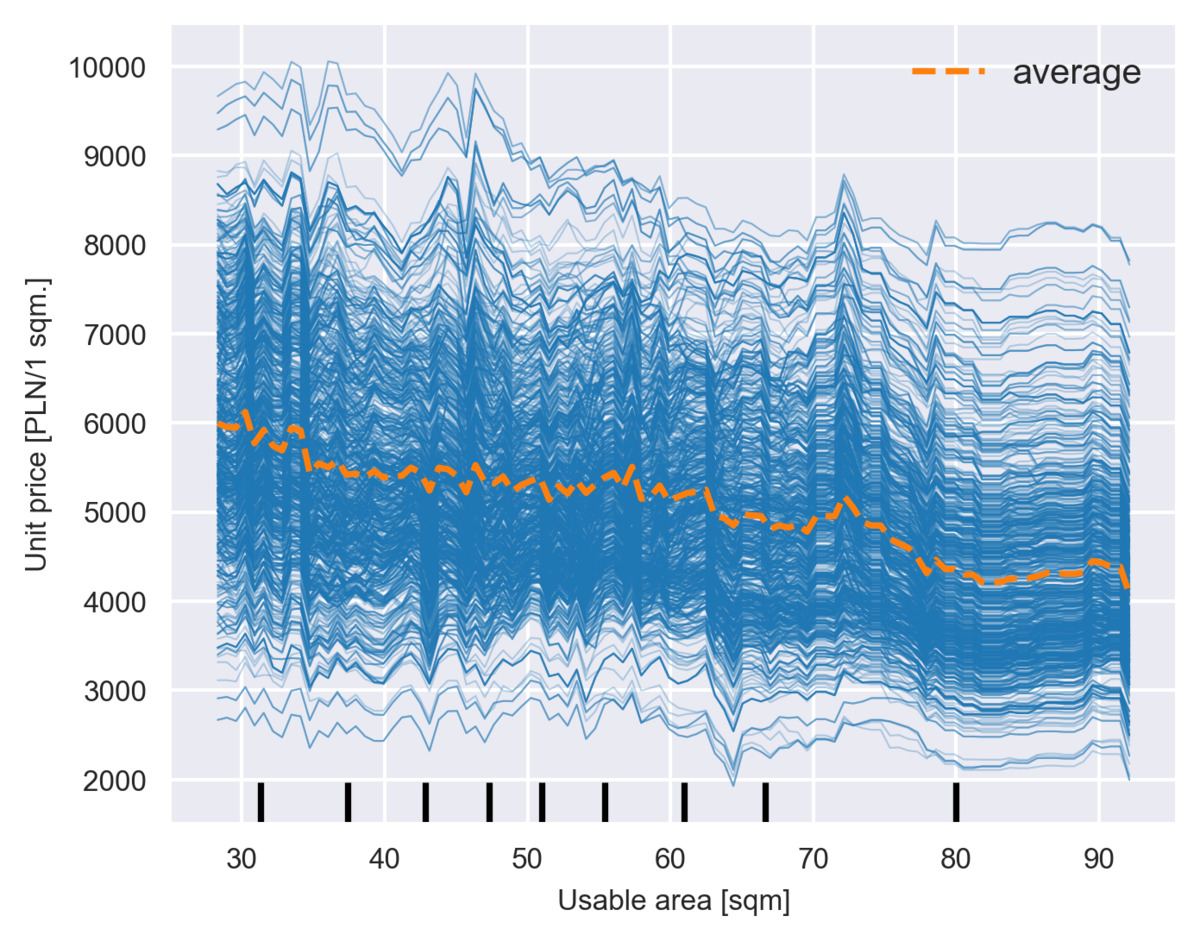Current issue
Online first
Archive
About the Journal
Aims and scope
Editorial Board
International Editorial Board
List of Reviewers
Abstracting and indexing
Ethical standards and procedures
REMV in Social Media
Contact
Instructions for Authors
Instructions for Authors
Manuscript formatting template
Title page
Highlights
Payments
‘Ghostwriting’ and ‘Guestauthorship’
Guidelines for Referees
Determining real estate features' influence on prices with partial dependence plots: A case study in Szczecin, Poland
1
University of Szczecin, Poland
Submission date: 2024-03-31
Final revision date: 2024-09-05
Acceptance date: 2024-10-09
Publication date: 2024-12-22
REMV; 2024;32(4):105-116
HIGHLIGHTS
- catboost regression algorithm outperformes multiple regression model accuracy
- time variable improves models' accurary
- PDPs help understand relationships between properties' features and prices
KEYWORDS
TOPICS
ABSTRACT
The study explores the application of Partial Dependence Plots (PDP) in the analysis of real estate features. The study centers on a selected real estate market in Szczecin, Poland, aiming to highlight the efficacy of PDP in understanding and interpreting the complex relationships between various features and property prices. The primary objective is to showcase the potential of PDP in capturing the nuanced interactions between real estate attributes and their impact on market prices. The CatBoost model, known for its robust handling of categorical features and strong predictive capabilities, is employed as the machine learning algorithm for this analysis. The performance of this model will be compared against a traditional multiple linear regression model, providing insights into the advantages of leveraging advanced machine learning techniques in real estate analysis. Results obtained from the analysis will be presented and discussed, shedding light on the interpretability and accuracy of the CatBoost model compared to the traditional linear regression approach. The presentation will conclude with implications for real estate practitioners and researchers, emphasizing the potential for PDP to enhance the transparency and understanding of complex models in the real estate domain. This research contributes to the growing body of knowledge on the application of advanced machine learning techniques in real estate analysis.
We process personal data collected when visiting the website. The function of obtaining information about users and their behavior is carried out by voluntarily entered information in forms and saving cookies in end devices. Data, including cookies, are used to provide services, improve the user experience and to analyze the traffic in accordance with the Privacy policy. Data are also collected and processed by Google Analytics tool (more).
You can change cookies settings in your browser. Restricted use of cookies in the browser configuration may affect some functionalities of the website.
You can change cookies settings in your browser. Restricted use of cookies in the browser configuration may affect some functionalities of the website.




